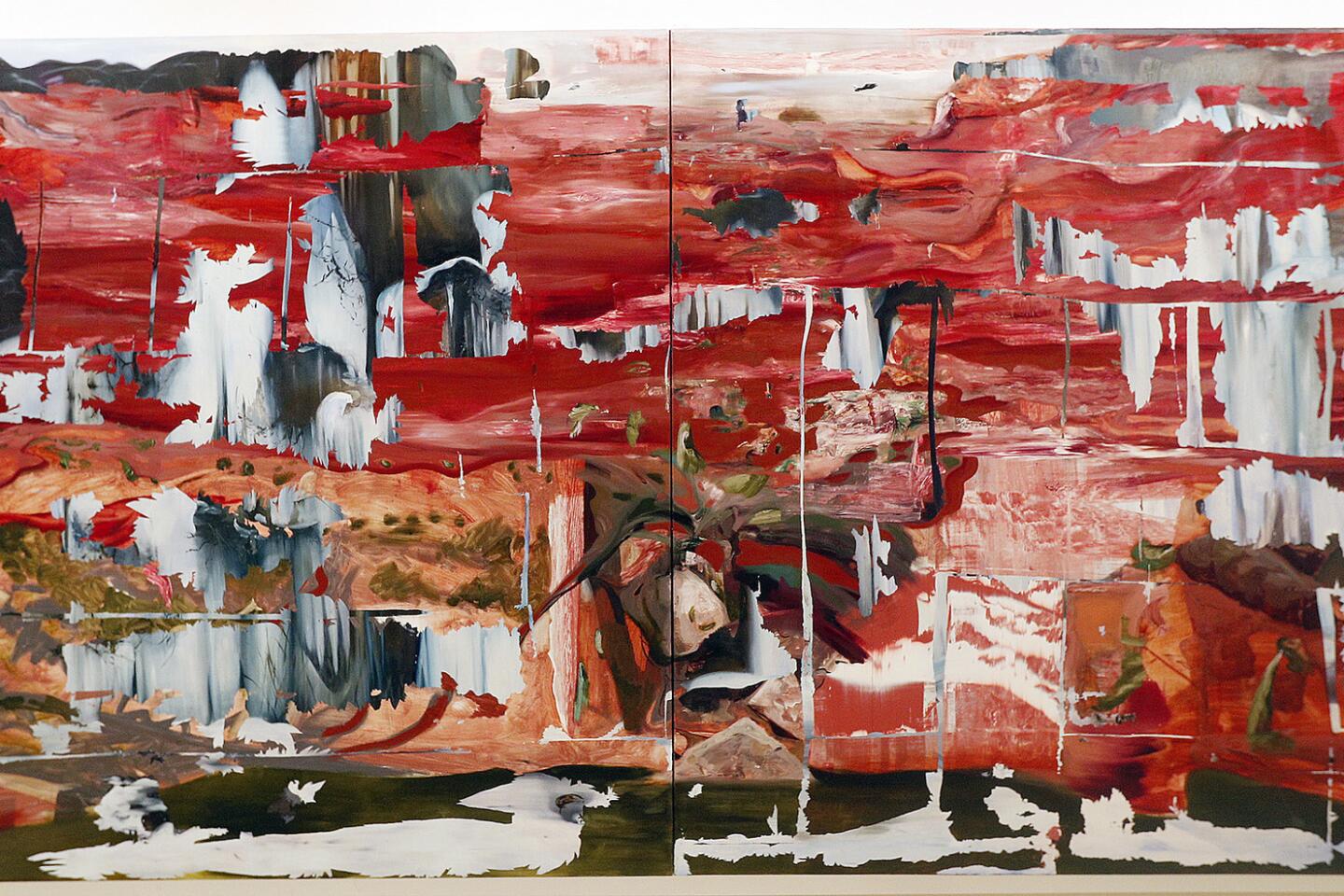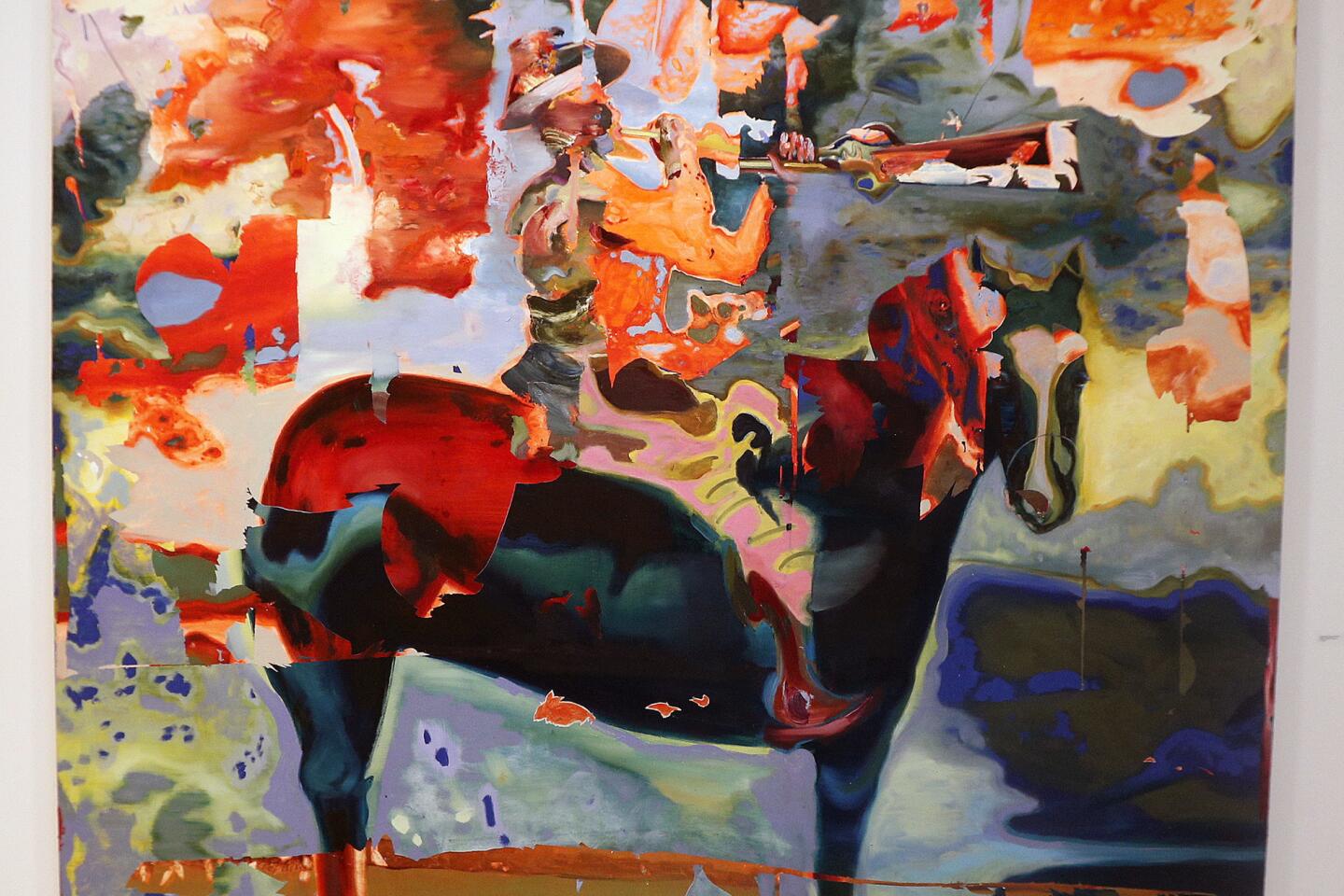Gallery exhibit at Glendale library explores themes of mobility
Through abandoned mobile homes and multi-layered paintings, two contemporary artists describe how the past affects the future.
Late last month, the Brand Library and Art Center’s summer art series installed exhibits exploring mobility and how people and behaviors travel through time.
“The River Lethe” by Joshua Hagler and “Itinerant Architectures” by Elizabeth Dorbad will be displayed at the library until Aug. 24. The exhibit features two artists’ different approaches to how mobility, of both ideas and objects, travel throughout generations.
“We’re both looking at things left behind, with nostalgia as a subject,” said Hagler, 38, a contemporary artist from Los Angeles.
Even discarded objects, such as the abandoned mobile homes Dorbad finds in junkyards, bridge the past and the present.
“Everything is moving, things are not static, they’re mobile,” said Dorbad, 48, a visual artist from San Francisco.
The Brand Library and Art Center first selected Hagler’s “The River Lethe” exhibit for its gallery, said exhibition supervisor Shannon Currie Holmes, adding that his 32-piece display was big enough to be presented individually.
However, the library’s gallery rarely gives an artist their own exhibit, so a second artist had to be found. The other artist’s works had to be “similar to the first in theme, but not too complementary, so the exhibits can tell their own story about mobility,” Currie Holmes said.
Hagler met Dorbad at an artist’s residency in Los Angeles, and they became friends. When told he needed a second artist, Hagler recommended Dorbad.
For inspiration, Dorbad spent time on the Central Coast of California, visiting junkyards and reflecting on Western expansion and frontierism.
She chose to focus on mobile homes and how they are the vehicular bridges for exploration.
“Mobile homes are plentiful in California, and it got me started thinking where mobile homes are found: near wilderness, in the woods, found near mining and agriculture,” Dorbad said.
There are few physical pieces of Dorbad’s work displayed in the gallery. Dorbad either recreated the objects through artwork or cut out pieces of them, and then left the main objects where she found them.
With gold or bronze paint, or by cutting a cathedral window into a mobile home, Dorbad brings life to the forgotten vehicles of migration.
“Mobile homes represented something more transient,” Dorbad said. “It would last a generation or two, but it was art. It was between a vehicle and architecture.”
Hagler’s exhibit “The River Lethe” is named after the river in Greek mythology that gives a person amnesia after drinking from its waters.
His paintings often tell stories inside of stories. For example, one of his pieces is of a canyon over a frozen waterfall, but he tears the canyon down to show the waterfall underneath. The essence of the waterfall is still there, despite decades of change, which is also indicative of personality traits and behaviors within humans.
“You can have memory in your body, but you don’t have conscious memory,” Hagler said.
Through his work, Hagler said he examines how people’s behaviors are doomed to be repeated if they do not understand their history.
michael.livingston@latimes.com














